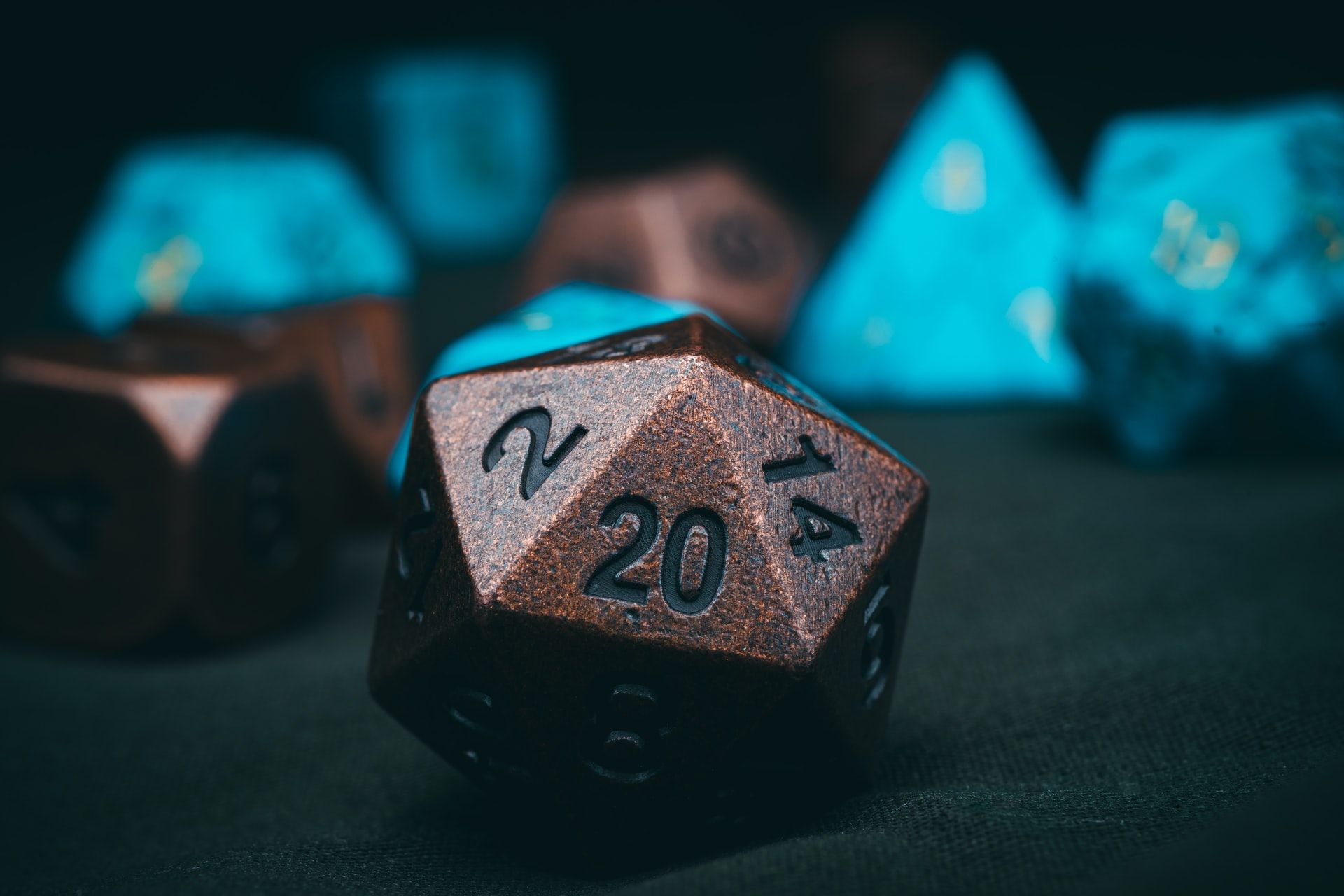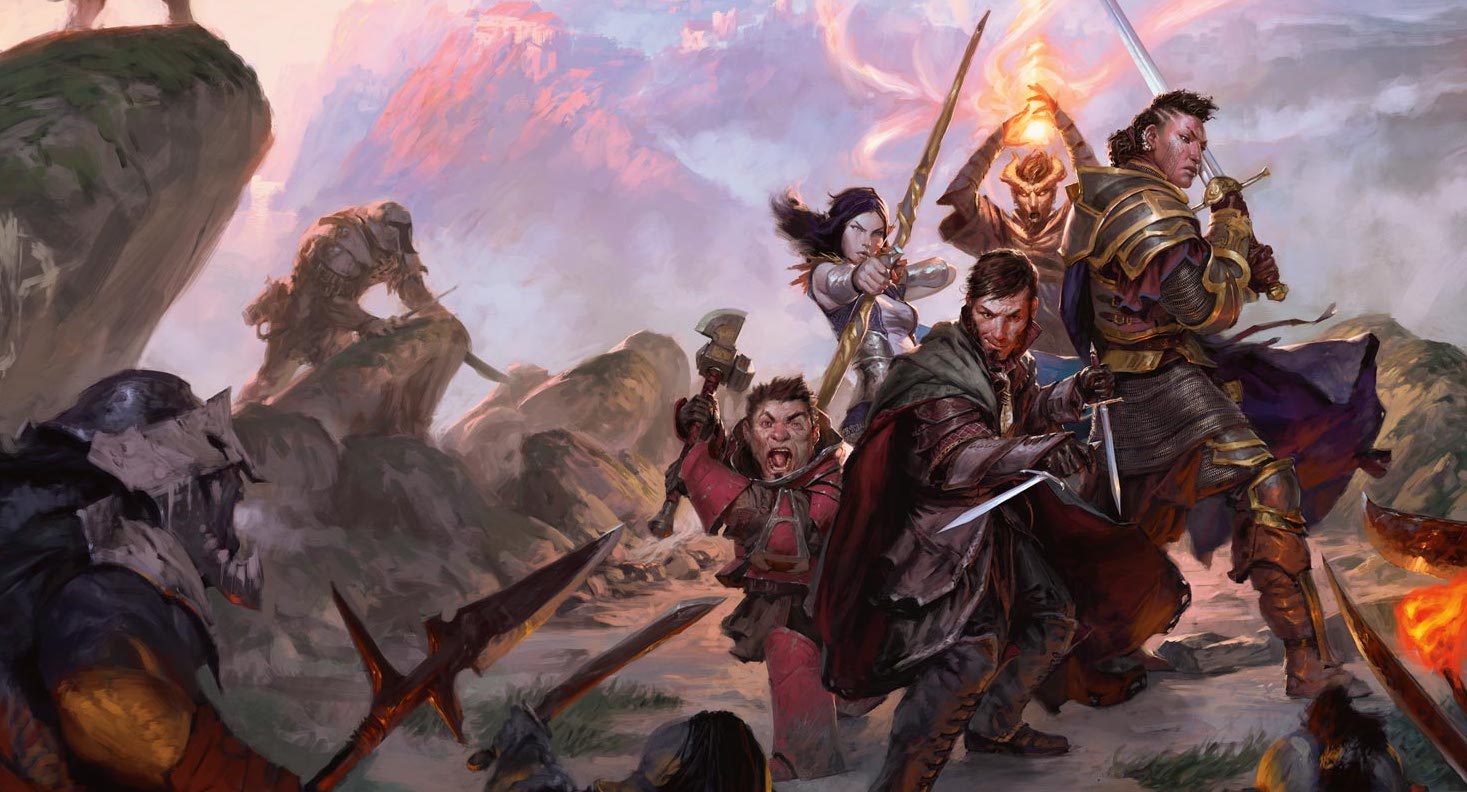A New Player’s Guide to the D&D Basic Races
Building a character from the face up.

So, you’re starting a new campaign. You already know the setting, the hook, and what level you’re starting at. Now it’s time to build a character! Where do you start? Well, what race is your character? As with many other aspects of D&D, picking a race for your brand-new character looks really simple on the surface. Why should it matter? It’s just how they look and talk, right?
Alas, no. In D&D, every choice matters mechanically, including what race your character hails from. The basic gist of it is that each race, because of their inherent story, has a set of mechanical bonuses that make them predisposed to different strengths and classes in the game.
Where the Races Come From
Although there are hundreds of official and homebrew races to choose from, the best place to start for a new player is the nine Player’s Handbook races, which are the most basic and universally explored. They’ve got clear rules for mechanics, appearance, and culture, meaning that you don’t have to create them all yourself (is that fun? Yes! Is that overwhelming! Oh, yes).
Most of the original D&D races are based on Tolkien-esque classic fantasy tropes, although there are a couple that are unique to the game. The nine original races are Dwarves, Elves, Halflings, Humans, Dragonborns, Gnomes, Half-elves, Half-orcs, and Tieflings.
A Quick Guide to Racial Stats
When considering a race for your character, you’re going to want to look at their basic statistics. These include:
- Size. D&D assigns different rules to different sizes of creatures, ranging from Tiny (about two feet tall) to Gargantuan (about 20 feet tall). Most player races are Medium.
- Speed. The average basic walking speed in D&D is 30 feet per round. Your character might also have a climbing, swimming, or flying speed, depending on their build. If it’s not specified, consider all speeds the same, and your flight speed zero if you don’t have wings.
- Age. This is the average lifespan of the race and includes about when they are considered mature.
- Languages. Most races speak Common and one other language native to them.
- Ability Score Increases and Racial Traits. These are the natural boons your character gains just by virtue of being them! You’ll generally get a +2 to at least one stat score (Strength, Dexterity, Constitution, Wisdom, Intelligence, or Charisma) and a few other physical traits like particular resistances to different damage types.

Dwarves
If your immediate thought was Gimli, son of Gloin, then you already know what’s coming. Dwarves are short, strong mountain-dwelling folk known for their fantastic weaponry and long-standing grudges. They’re culturally obsessed with gold and glory and have a deep loyalty to their clans. Their society comprises several kingdoms in mountainous regions, who keep to themselves other than to trade their masterwork goods.
Dwarves can live for over 400 years, maturing after about 50. They’re between four and five feet tall, and average out at 150 pounds (meaning they’re considered a Medium creature). They’re not as fast as the other races, with a standard walking speed of about 25 feet. They speak Common and Dwarvish.
What’s cool about Dwarves is that they’re extremely hearty. They have a +2 bonus to their Constitution scores, can see in the dark, and are resistant to poisons. They’re also fantastic at crafting tools and deciphering information about stonework, even when it’s not Dwarvish in origin. Dwarves make excellent paladins, fighters, and barbarians.
Elves
These are another race derived from Tolkien’s work. Elves are beautiful, tall, otherworldly humanoids. They’re renowned for their magical prowess and elegant society, and tend to live in glittering cities ensconced in ancient forests or tall, thin, silver spires on the coasts. Culturally, elves are unnervingly calm, with the perspective of centuries-long studies to fall back on. They’re highly diplomatic and somewhat isolationist in views.
Elves are average in speed and height, at 30 feet per round and between five and over six feet tall (making them another Medium race). They age much more slowly than most of the other races, reaching maturity at 100 years old, and living to be about 750. Elves also don’t sleep like other races; they enter a meditative trance for four hours to rest. They speak Common and Elvish.
Elves are lithe and free-moving, meaning they have a +2 to their Dexterity score. They can see in the dark, have keen senses that let them pick up on their surroundings faster, and related to the Fey, meaning they can’t be easily charmed or put to sleep by magic. Elves make fantastic rangers, but are also well-suited for magic classes.
Halflings
We’re almost done with Tolkien, I promise.
Halflings are exactly what you think they are — about half the height of a human, with a tremendous love of food and creature comforts. Halflings seek calm, peaceful lives in agricultural communities. They have no need for adventures, thank you very much… except that they do because of their innate curiosity and empathy for those in distress.
Halflings aren’t particularly quick, at only a 25ft walking speed, but they are nimble, with a natural ability to move through the space of any creature one size larger than they are. They’re usually around three feet tall, 40 pounds, and count as a Small creature. Many live lives well over a hundred years, some even around 200. They reach maturity at age 20.
Halflings come in two standard varieties: Lightfoot and Stout. Both have a +2 to their Dexterity scores, but Lightfoots also have a +1 to Charisma while Stouts have a +1 to Constitution. Lightfoots are naturally stealthy, meaning they can hide easily behind larger creatures (for mechanical bonuses) and Stouts are naturally resilient, meaning they gain Advantage on saves against poison and Resistance to poison damage.
All Halflings are naturally lucky, which gives them the cool benefit of being able to reroll on certain things when they critically fail. They make amazing rogues and bards.
Humans
We’ve finally reached the end of the Tolkein-inspired line! Yep, even regular old people get this treatment — humans in D&D are very much Gondor-inspired. They’re the youngest of the classic species, driven and diverse, and the biggest innovators in their worlds. The Player’s Handbook lists nine distinct ethnicities. I’m not going to go into detail on any of them because no one uses them.
Humans are… well, human. They mature at around 18, live around a century (if we’re being generous), average between five and six feet tall, count as Medium creatures, and have a standard walking speed of 30ft. They speak Common and one other language of their choice.
What is cool about humans in D&D is that, in the Player’s Handbook, it lists Standard and Variant humans. Standard humans’ ability scores each increase by 1, but a Variant human can pick two ability scores to increase by 1 each, one skill proficiency, and one Feat at level 1. This means that humans can be good at anything they want to.
Dragonborns
Dragonborns might be my favorite of the D&D races, even though I haven’t had time to play one yet. As the name implies, these are a people descended from dragons, born with scales covering their bodies and powerful magic inherent in them. While dragons in the game are amazing enough to write an entire article about on their own, it’s enough to say right now that they’re massive, powerful, rare, and their coloration determines their powers.
Unfortunately, Dragonborns are one of the shortest-lived species, with lives ranging around 80 years. At 15, they reach adulthood, which is faster than other races. They average well over six feet tall and 250 pounds, and are considered Medium creatures. They speak Common and Draconic.
Because of their monstrous build (said as lovingly as possible), Dragonborns have a +2 in their Strength score. They also have a +1 in their Charisma score, I can only assume because dragons are really cool.
Dragonborns have inherent magic through their draconic lineage. This means that, depending on what dragon type they descend from, they have resistance to one type of damage and can deal that damage in a breath weapon. For instance, most classically, a Red Dragonborn is resistant to fire and breathes fire as an attack! Dragonborns make amazing paladins and fighters and potentially terrifying barbarians and monks.
Gnomes
Gnomes are interesting; based on various mythological traditions from around Europe, Gnomes are a people of curious explorers and inventors. They may be small, but they know how to take up space. Gnomes are bombastic, excitable, and loud, known for trying anything and everything they can to sate their inquisitiveness. Gnomes live in rolling hills and bright woodlands, in cleverly hidden cities and settlements frequently built alongside Human dwellings.
Gnomes are another race with variants — Forest and Rock. In both cases, Gnomes get a +2 to Intelligence, can live upwards of 350 years (maturing at around 40), and are considered Small creatures because they stand at a solid 3–4 feet tall and weigh about 40 pounds. Forest Gnomes get a +1 to Dexterity while Rock Gnomes get a +1 to Constitution.
Gnomes can see in the dark, are considerably cunning (which gives them Advantage on Intelligence, Wisdom, and Charisma throws against magic), and speak Common and Gnomish. Forest Gnomes are gifted with illusions and dealing with small animals, making them potentially amazing rangers. Rock Gnomes are excellent tinkers and builders, making them very good at a standard-adjacent class called artificers. Both kinds of Gnomes would make amazing wizards.
Half-Elves
If you’re looking to build an angsty character, a mixed race is probably your best bet. These characters result from the unusual pairing of two disparate races, and one of the most common is the Half-Elf. Because of their mixed ancestry, they can walk through both the Elven world and the world of their other parent (with the Player’s Handbook version, this would be Humans), but they don’t really belong to either.
Half-Elves are another Medium race, ranging in the normal height and weight categories of both Elves and Humans, depending on who they take after more. They can have the coloration of some Elven subtypes, including color-changing hair and skin that match the seasons, or they can take their appearance from their Human parent, appearing as a lithe Human with more pointed ears and eyes reminiscent of the Elves.
Because of their mixed heritage, Half-Elves get a lot of the benefits of both races. They have a +2 to their Charisma score, like the Elves, and can add a +1 to another two scores of their choice, like the Humans. They can’t be made to fall asleep magically, have Advantage on saving throws against charming, and gain proficiency in two skills of your choice. They speak Common, Elvish, and one other language you choose (gotta love Human utility!).
Half-Orcs
The other most common mixed race is the Half-Orc. Half-Orcs are big, boisterous, and dangerous to have as enemies. Most often raised among the Orcs, a tribal and culturally violent race (who claim new territories through acts of war among themselves and value physical strength), Half-Orcs bear a lot of scars, both physically, in trying to prove their worth, and mentally, in trying to accept it.
When they leave Orcish society, they usually strike out to make a name for themselves in “civilized” lands, most often ending up among Humans and becoming adventurers to earn respect and admiration where there would otherwise be scorn.
Half-orcs, in stark contrast to Half-Elves, reap more benefits from their Orcish side than they do from their Human side. They’ve got a +2 to their Strength score and a +1 to their Constitution score, built like tanks ranging around six feet tall (they’re still considered a Medium race). They age faster than full Humans do, maturing at about 14 and only living to about 75, and can see really well in the dark.
The most interesting things Half-Orcs inherit are their physical traits. Half-Orcs have Relentless Endurance, which lets them save themselves from an otherwise fatal blow once per long rest. They also gain proficiency with the Intimidation skill because of their menacing presence and have the Savage Attacks feature, which lets them roll additional melee damage when they critically succeed on an attack.
Half-Orcs are basically tailor-made to be the best barbarians out there.
Tieflings
Tieflings are the last mixed race, the last of the base races, and possibly the most popular base race. There’s good reason for that, as well! Tieflings have inherently interesting backstories! Tieflings are the products of an infernal bloodline, meaning they’re part-devil humanoids. An important note, though — they’re not half devils. That’s a distinct thing entirely. No, Tieflings are a few generations down the line.
Tieflings bear the physical traits of their devilish ancestor. They may have strangely colored skin (ranging across the entire color spectrum from scarlet to indigo), horns, tails, claws, brilliant eyes in odd colors (sometimes even solid!), or any mixture of these traits. Because of these obvious signs of the Abyss, wider society frequently mistrusts and dislikes Tieflings. They get blamed for strange happenings, frequently hated by religious groups and banned from churches, or chased out of towns entirely. It’s safe to say that a Tiefling is unlikely to walk into town unquestioned.
Tieflings have a +2 to Charisma and a +1 to Intelligence. They live about the same amount of time that Humans do, if not just a few years longer, and have very similar builds, making them a Medium creature. They can see in the dark, and have a natural Resistance to fire damage. They speak Common and Infernal.
They also get a few neat magical features. Tieflings can cast the Thaumaturgy cantrip no matter what class they are, and when they hit third level, they can cast the spell Hellish Rebuke (which lets them cast hellfire at a creature). When they hit fifth level, they can also cast Darkness. Tieflings make amazing rogues and sorcerers.

Being Basic Can Be Fun
So there you have it! The nine base player races of D&D. If you’re playing for the very first time, this is probably the best place to start. Honestly, even if you’ve been playing for a long time, making a really basic, “overdone” character can be incredibly fun.
This is your story and your character. You get to decide how they fit into the world you and your friends are inhabiting, whether it’s a premade setting or your DM’s homebrew. You get to decide whether they stick to the classes people know these races best for, or whether they strike out as something completely new. The combinations even of the basic Player’s Handbook materials are many and varied; there’s really a playstyle for everyone.
You want to play something totally standard? Go for it! D&D is all about playing what makes you happy, and sometimes traditional characters are the most fun to explore.
